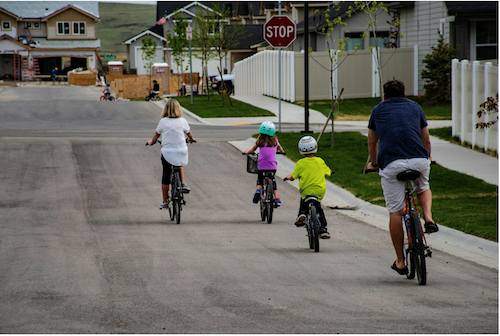5 Road Safety Skills Every Toddler Should Know
Navigating the bustling streets presents a labyrinth for adults, let alone toddlers. It's crucial for parents to arm their little ones with an understanding of road safety - a skill set that serves as both a shield and compass in the urban sprawl.

From grasping the simplest act of clasping hands to decoding the kaleidoscope of traffic signals, each lesson paves the way for safer steps. Beyond mere rules, it's about nurturing an instinct for safety that becomes second nature.
This article charts a course through five fundamental road safety skills every toddler should learn, paired with actionable strategies parents can employ to embed them into their child’s daily routine.
1. The Art of Hand-Holding
Hand-holding is the bedrock of toddler road safety, a non-negotiable habit when navigating the streets. It's not just about physical support; it's about creating an unspoken pact between parent and child: "Together, we're safe."
Instil this early on by always reaching for your child's hand before stepping off the curb and explaining its importance in simple terms. Reinforce the habit with consistent practice, making it a natural part of every outing. And remember, praise goes a long way—celebrate each time those little fingers curl trustingly around yours, solidifying this essential safety reflex.
2. Navigating Traffic Signals
The dance of traffic lights isn't just a colourful display; it's a language toddlers must learn to stay safe. Begin with the basics: red means stop, green means go, and yellow calls for caution. Make it interactive by playing games that simulate crossing streets at home, using homemade traffic lights.
During walks, narrate your actions as you obey signals and encourage your little one to voice what they see. "What color is the light now?" you might ask.
Turning learning into a shared activity means toddlers will soon grasp these chromatic cues that dictate when it's their turn to walk or wait. As a result, a young pedestrian’s understanding of traffic flow takes root.
3. The Principle of Eye Contact
In the realm of road safety, eye contact is not just courtesy—it's a critical non-verbal handshake that can save lives. Teaching toddlers to seek a driver's eyes ensures an unspoken agreement; "I see you, you see me, we are aware of each other."
When crossing the street, model this behavior by deliberately making eye contact with drivers before stepping off the curb. Use simple terms to convey why it's important: for instance, "We look at the drivers to make sure they stop for us."
That way, toddlers learn to actively engage with their surroundings and use eye contact as a personal radar on wheels – detecting attention and ensuring visibility in a sea of pedestrians.
4. Understanding Vehicle Movement
Young minds are adept at soaking up patterns, and the ebb and flow of vehicles are no exception. Early comprehension of how cars move and turn can be a lifesaver for toddlers.
This skill goes beyond recognising that vehicles can move quickly; it's about grasping that cars need space to stop and cannot instantly halt their steel momentum. To teach this, parents can use toy cars to demonstrate the concept of stopping distance or simply narrate vehicle actions while waiting at crosswalks, emphasising how a car slows down before it stops.
5. Pedestrian Pathfinding
The skill of pathfinding for a pedestrian, especially one as young as a toddler, is akin to navigating a complex grid. For them, every pathway and sidewalk is an educational trail that lays down the rules of spatial awareness and the importance of sticking to designated walkways.
To build this acumen, parents might discuss different types of paths and why some areas are off-limits. As you walk together, highlight safe places away from traffic. Introduce crosswalks as "special paths that help us cross the street safely."
And when curiosity strikes about the vehicles sharing their world—perhaps wondering "what is a class-b license"—use it as an opportunity to explain various vehicle types and their spaces on the road. That way, you will reinforce their respect for boundaries between pedestrian zones and vehicular lanes.
Conclusion
Inculcating these road safety skills in toddlers sets a foundation that will extend far beyond their initial, tentative steps. It's about crafting an instinct for safety that becomes as natural as breathing, a shield they carry unconsciously into the bustling world.
Each lesson is a stitch in the fabric of lifelong vigilance and respect for the rules of the road. By making these practices part of your daily routine, you are not just teaching your child; you're investing in their future autonomy and well-being.